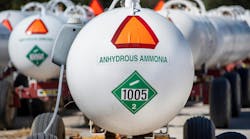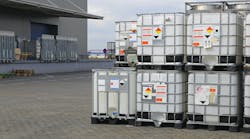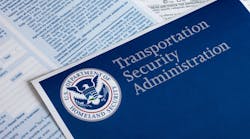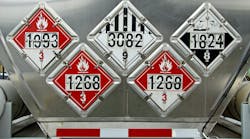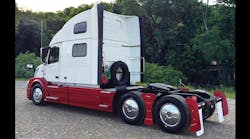The Federal Motor Carrier Safety Administration (FMCSA) has proposed a split sleeper berth pilot program for 200 drivers who have their commercial driver's license and operate in sleeper berths. The study will last 90 days. The Virginia Tech Transportation Institute as well as Washington State University will conduct this study in cooperation with FMCSA.
The agency’s split sleeper berth pilot program is looking to determine effects split sleeper berth options would have on drivers' fatigue. Today, drivers using sleeper berth time must log at least eight hours in the sleeper berth to qualify. The driver then takes the other two hours off-duty at another time. Some split sleeper berth options are 5-5, 6-5 and 7-3. The study’s outcome could dictate whether FMCSA decides to reform the hours of service sleeper regulations.
Current regulations allow drivers to take an eight-hour sleeper berth period to break up their 14-hour on-duty window and their 11-hour drive-time limit. Drivers must take a two-hour off-duty period after exhausting their 11-hour drive-time limit. The two-hour off-duty period counts against drivers’ 14-hour limit for the on-duty period broken up by the two-hour break.
Driver metrics would be collected for the duration of the study, and participants' safety performance and fatigue levels would be analyzed. This pilot program seeks to produce statistically reliable evidence on the question whether split sleeper berth time affects driver safety performance and fatigue levels.
Carriers wanting to participate in the study are encouraged to visit the pilot program Web site (www.sleeperberthstudy.com) and complete an electronic application with screening questionnaire, which will request the following details, at a minimum: Name, carrier information, company name, job title, carrier size, and whether the carrier's drivers have previously completed the NAFMP (specifically modules 3 and 8).
The carrier must grant permission for OBMS and/or ELD equipment to be temporarily installed in the vehicles of participating drivers, and for drivers to use the study-provided ELD system for recording HOS during the period of data collection (up to 90 days).
The carrier's representative must acknowledge that driver data to include OBMS video, driving data, sleep data, performance data, and caffeine data must remain confidential and will not be shared with the company. The exception to this is ELD data for properly recording a driver's HOS.
Drivers wanting to participate in the study will need to visit the pilot program Web site (www.sleeperberthstudy.com) and complete an electronic application and screening questionnaire, which will request the following details, at a minimum: Name, contact information, MEC expiration date, CDL status, typical operation type (solo, team, or slip seat), location of their home terminal, whether they regularly drive a truck equipped with a sleeper berth, whether they regularly use their sleeper berth, whether they have previously completed modules 3 and 8 of the NAFMP, and whether they currently use paper or electronic HOS logs.
Participating drivers will drive an instrumented vehicle (instrumented by the research team with a study-provided OBMS and custom ELD) for up to 90 days. During a pre-study briefing, participants will receive a study-provided smartphone (installed with a variety of data collection applications), as well as a wrist actigraphy device.
Participants whose vehicles are not already equipped with a compatible ELD will be provided with an approved ELD application (installed on the study-provided smartphone). At a minimum, FMCSA will gather the following data during the study:
- ELD data, to evaluate duty hours and timing, driving hours and timing, rest breaks, off-duty time, and restart breaks.
- OBMS data, to evaluate driving behaviors, SCEs (crashes, near-crashes, and other safety-related events), reaction time, fatigue, lane deviations, and traffic density (as discerned from viewpoints of the multiple cameras), road curvature, and speed variability.
- Roadside violation data (from carriers and drivers, as well as the Commercial Driver's License Information System (CDLIS)), including vehicle, duty status, hazardous materials, and cargo-related violations (contingent upon inspections).
- Wrist actigraphy data, to evaluate total sleep time, time of day sleep was taken, sleep latency, and intermittent wakefulness.
- Psychomotor Vigilance Test (PVT) data, to evaluate drivers' behavioral alertness based on reaction times.
- Subjective sleepiness ratings, using the Karolinska Sleepiness Scale, to measure drivers' perceptions of their fatigue levels.
- Sleep logs, in which drivers will document when they are going to sleep, when they wake up, and whether they are using the sleeper berth. For split-sleep days, drivers will record how and why they chose to split their sleep.



